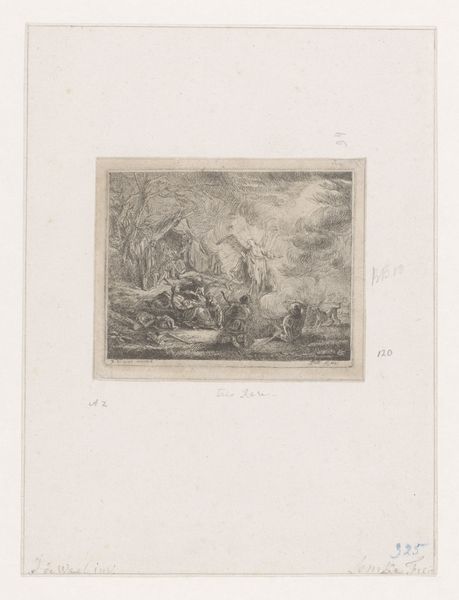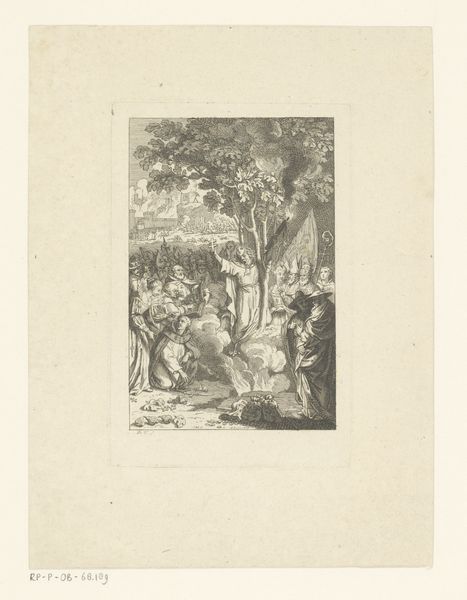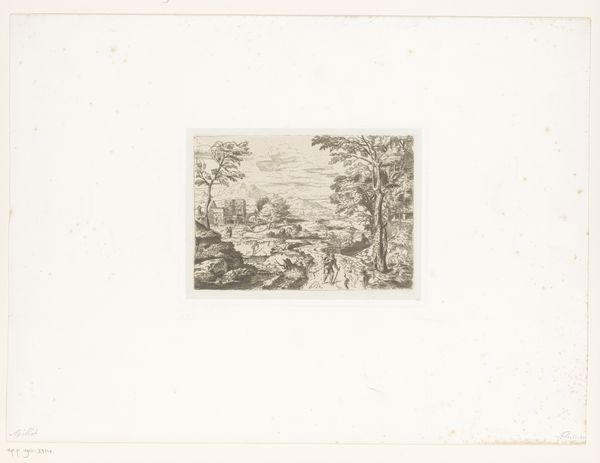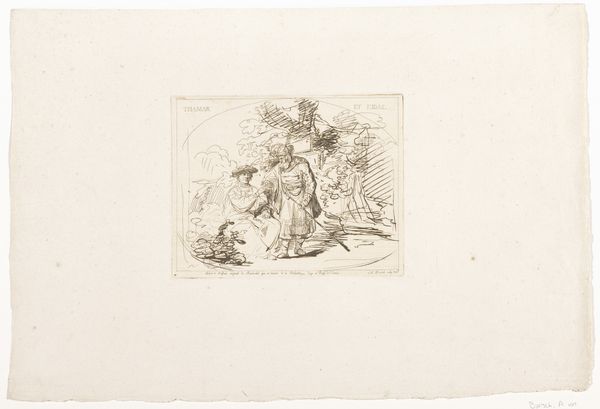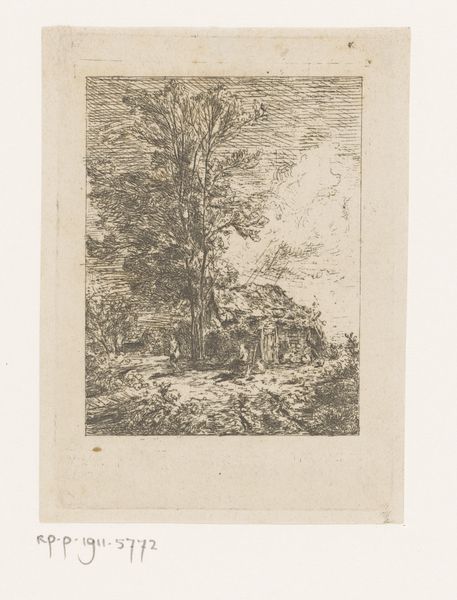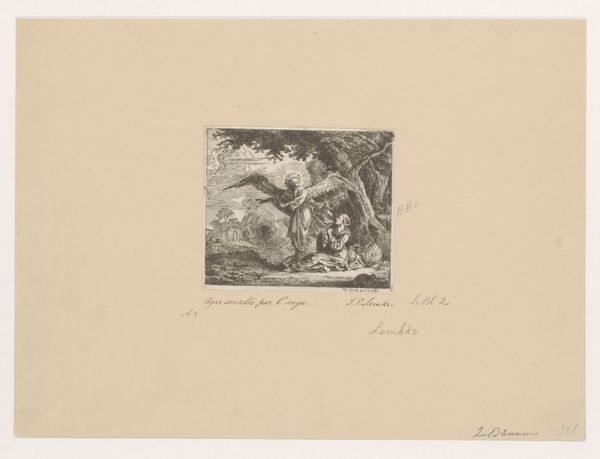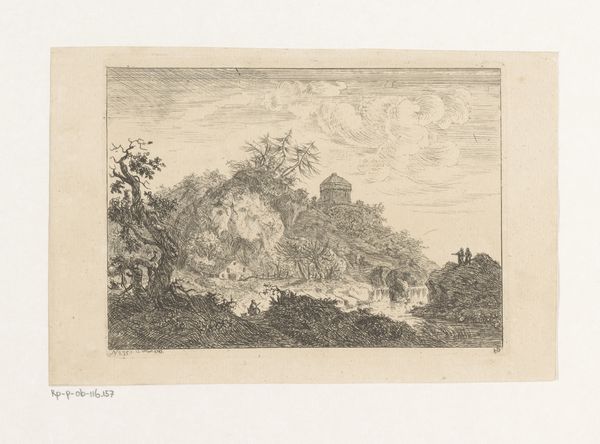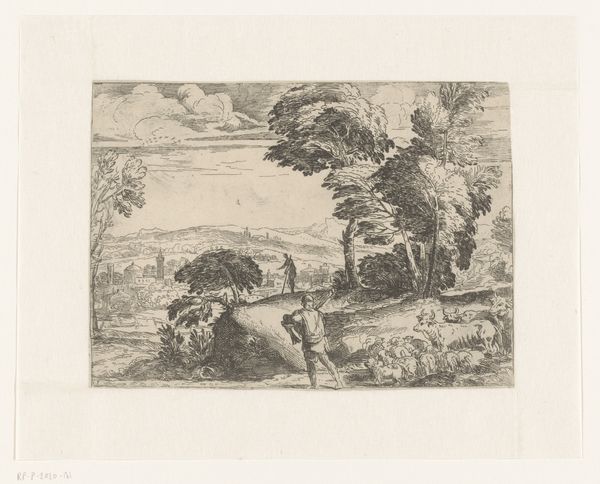
print, engraving
#
baroque
# print
#
old engraving style
#
landscape
#
history-painting
#
engraving
Dimensions: height 123 mm, width 175 mm
Copyright: Rijks Museum: Open Domain
Curator: Here we have Antonio Tempesta’s engraving, “Landscape with Ruin and Inn,” created sometime between 1592 and 1598. The Rijksmuseum holds this fascinating piece. Editor: Immediately, I’m struck by its rather bleak mood. Despite the title, it evokes more a sense of decay and transience. It's dominated by the stark contrast of light and shadow. Curator: Yes, that contrast is quite striking, isn't it? The landscape itself seems almost indifferent to the human figures, doesn't it? I find this relevant to contemporary understandings of the social conditions and inequalities, especially with the looming ruin contrasting the everyday activity. Editor: Ruins carry immense symbolic weight, often representing the fall of empires or vanished glories. And there is also an implication that something terrible happened in this particular area and space. Curator: Absolutely. But even deeper, ruins often remind us of our place in time—both individual mortality and social systems’ fragility. The travellers seemingly seeking rest are contrasted by the inn's physical deterioration. This creates tension between the desire for stability and the stark reality of impermanence. Editor: And let’s consider that building, and also think about what it can mean to build something new. Curator: An intriguing consideration indeed. It brings forward questions around what "progress" truly means if everything eventually crumbles. The building carries all the burdens of previous inhabitants, its past looming over whoever takes shelter there now. Editor: Yes, it's not just about physical space but also a kind of accumulation of time and trauma that resides there, so beautifully presented within the medium of engraving. It encourages such reflections! Curator: Indeed, it highlights the human desire for belonging and shelter in a world always in flux, a struggle continuing even now, that extends to topics like ownership and safe lodging for those vulnerable. Editor: Considering how charged even a landscape can become opens a portal into considering how built environments continue to operate even now in different power structures, giving this old engraving style new weight and impact. Thank you for walking us through this, I feel like I see the work and context anew.
Comments
No comments
Be the first to comment and join the conversation on the ultimate creative platform.
